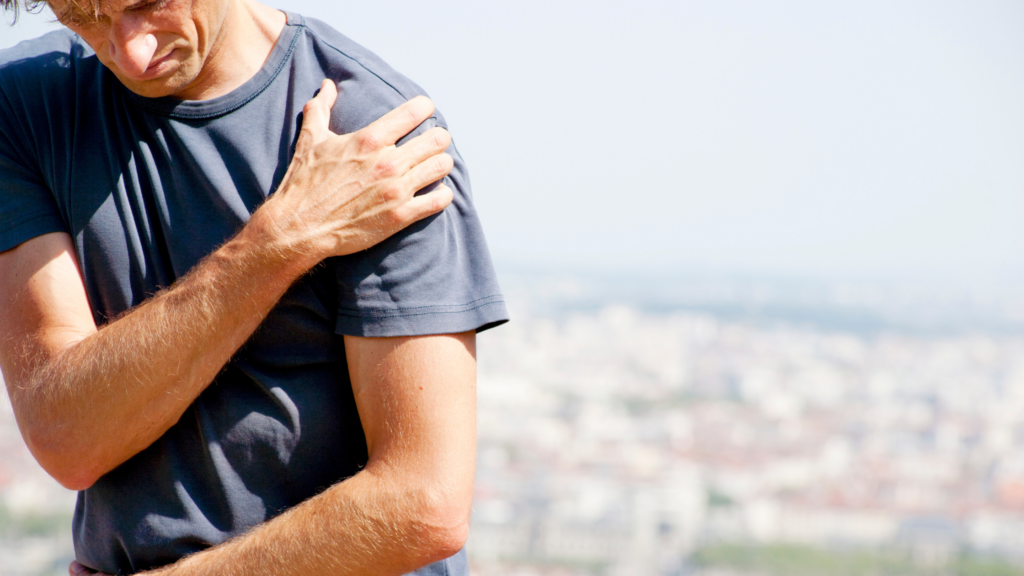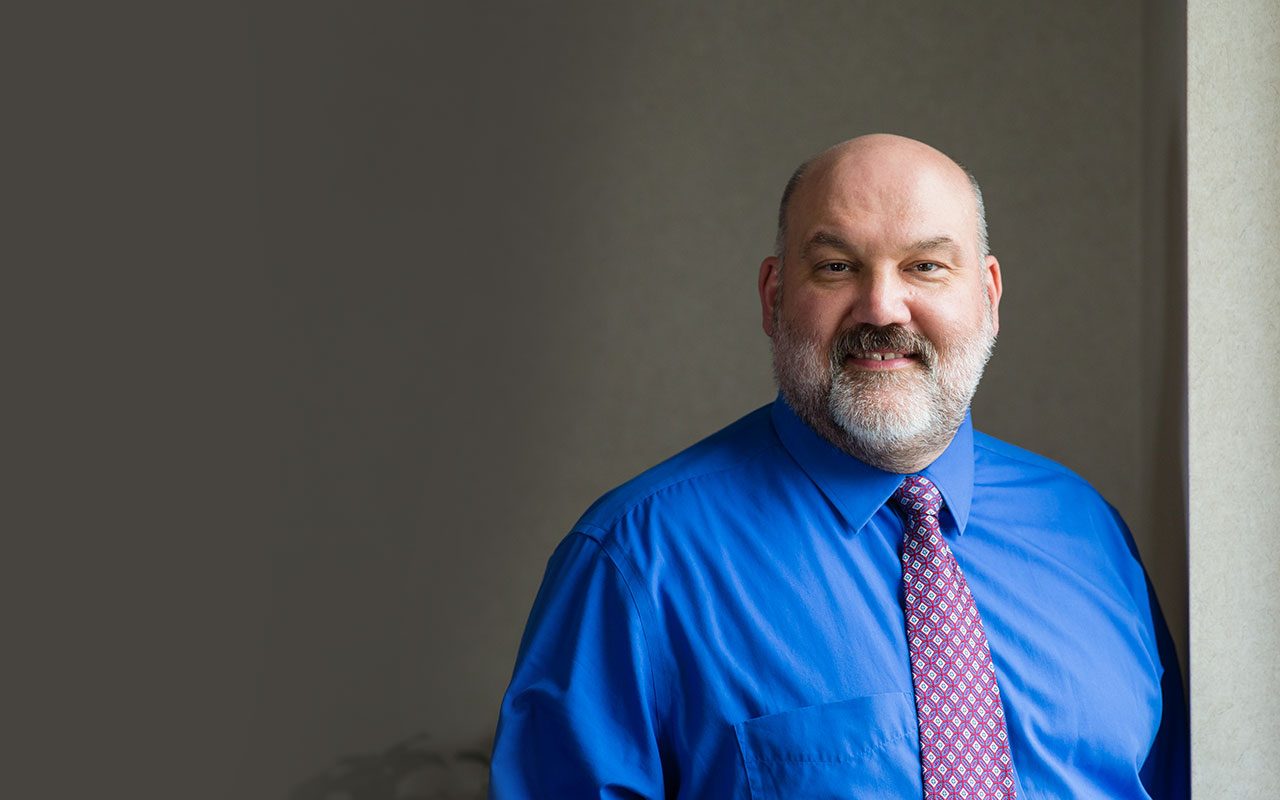The shoulder is a ball and socket joint. The ball is formed by the head of the humerus (upper arm bone) and the socket is called the glenoid fossa, which is part of the shoulder blade (scapula). This is the larger of the two joints that form the shoulder, called the glenohumeral joint. Each joint surface is covered by a layer of cartilage called articular cartilage. There is also a smaller joint between the collar bone and a separate part of the scapula which is called the A-C (acromioclavicular) joint. From a functional standpoint the shoulder joint design has a lower level of stability in exchange for a higher level of mobility compared to the hip joint – another ball and socket joint – which requires more stability for weight bearing. A shallow socket is what allows the shoulder joint to be more mobile and is also what causes it to be less stable.
Shoulder Anatomy: The Glenoid Labrum
Around the outer edge of the socket there is a rim of cartilage that allows the socket to be deeper (Imagine a race track with very high banked curves). This cartilage socket rim is called the glenoid labrum.
Shoulder Anatomy: The Rotator Cuff & Biceps Tendon
There are four rotator cuff tendons from shoulder blade muscles and they attach to the ball part of the ball and socket joint. They are responsible for coordinating movements to keep the ball aligned, as ideally as possible, within the shallow socket part of the joint through all the many motions achievable by the highly mobile shoulder joint. A large tendon from the biceps muscle also passes under the rotator cuff tendons in the shoulder. A “sack” called a bursa is strategically positioned in various locations to provide lubrication to all these tendons. There are also larger muscles surrounding the joint that perform the major motions of the shoulder as well as add strength and stability to the joint. Shoulder problems and neck problems often overlap because both regions share muscles that connect them.
Shoulder Injuries
As a result of the shoulder’s higher degree of mobility and lower degree of stability, there are certain characteristic injuries that are common to this joint and can involve any of the anatomic structures listed above. Injuries to the rotator cuff tendons are the most common shoulder conditions and can occur from either repetitive overuse or from a specific trauma (such as landing on an outstretched arm). Bursa sacks can become inflamed and cause bursitis. In the case of repetitive overuse, tendinitis develops, but in chronic cases recurrent tendinitis can evolve into tendinosis and eventually into rotator cuff tears. The biceps tendon can also experience injury is the same fashion, and in many cases biceps tendon and rotator cuff tendon injuries coexist. Because the biceps tendon (long head) is continuous with the labrum, injuries to both structures often coexist as well. Degenerative changes from osteoarthritis can also occur in the larger ball and socket (glenohumeral) joint of the shoulder as well as the smaller A-C (acromioclavicular) joint. All these injuries can be painful and cause functional problems in different ways.
Traditional Treatments for Shoulder Injuries
Surgical options exist for rotator cuff tears and other shoulder tendon or ligament injuries. There is the option to surgically replace shoulders when the degeneration has reached an advanced stage. Increasingly more people are becoming interested in intervening in some way before a shoulder joint reaches the stage where surgical replacement becomes the best option. As with every other medical condition, early intervention for shoulder osteoarthritis will result in the best outcome. Understanding the sequence of events that represents the process of shoulder osteoarthritis clarifies why certain non-surgical interventions are helpful. Activity modification helps minimize mechanical factors that may be exceeding what a given joint is capable of tolerating. Physical therapy and independent exercise programs help to maintain proper range of motion and muscular strength to support ideal shoulder joint motion. Non-steroidal anti-inflammatory drugs (NSAIDs) are available to address the inflammatory component of shoulder osteoarthritis. These medications help with the symptoms of pain, swelling, and stiffness but, they don’t change the degenerative process. NSAIDs can also cause organ damage with prolonged use.
Steroid medications can be injected into arthritic shoulder joints and provide the same anti-inflammatory benefits of relieving pain, swelling and stiffness. Steroids are more potent than NSAIDs, so the symptom relief is more prominent and lasts longer by comparison. Steroids, however, can cause or worsen many other health conditions and may eventually lead to the acceleration of articular cartilage degeneration with repeated injections. These factors limit the use of steroids for osteoarthritis.

Shoulder Injury Treatment Alternatives
Depending on the magnitude of degenerative change, the extent of tendon or labrum tear and of course the degree to which a person prioritizes avoiding a surgical intervention, Regenerative Medicine treatments can be considered for any of the shoulder injuries listed above. Call the Regenerative Spine & Joint Center today to find out if you are a candidate for Regenerative Medicine interventions for your shoulder pain. After discussing your shoulder history with you, performing a detailed physical examination and reviewing available imaging studies (x-ray, MRI, etc.) Dr. Terebuh will be able to give you his specific recommendations regarding whether or not Bone Marrow Cell Therapy or Platelet Rich Plasma (PRP) Therapy will help you accomplish the goals you have for your shoulder.
Bone Marrow Regenerative Cell Therapy for the Shoulder
Your bone marrow is a rich source of regenerative cells that have the potential to accelerate healing. Your bone marrow occupies the hollow center cavities of your bones and is literally a “factory” for the replacement of cells that circulate in your bloodstream. Bone marrow regenerative cells recruit cell signaling recovery molecules (cytokines) and other healing cells to migrate into the injured area to assist with the recovery process. Bone marrow regenerative cells can be very helpful in restarting and accelerating the healing process of articular cartilage within a degenerative joint. Although the articular cartilage can never be restored to its original status, improvement in the “smoothness” of the articular cartilage can help slow the progression of osteoarthritis and help lessen pain. Regenerative cells can also stimulate improved integrity of the joint’s stabilizing ligaments. Addressing this laxity can also help slow the progression of osteoarthritis. Compared to purchasing “frozen regenerative cells in a vial”, using your own bone marrow regenerative cells ensures that no one else’s genetic material is injected into you; avoids the possibility of germ or other contamination introduced during processing; and guarantees that the cells have never been exposed to preservatives or subjected to a freeze/thaw cycle which potentially impacts their viability.
PRP (Platelet Rich Plasma) Therapy for the Shoulder
Your “whole blood” is primarily liquid (plasma) containing solid particles like red cells, white cells, and the smaller platelets. During a PRP procedure a syringe of your whole blood is obtained from your vein and is then placed in a centrifuge to separate the layer of the plasma that contains a high concentration of platelets. The desirable growth factors and other cytokines (cell signaling molecules) useful in healing are associated with platelets. After this platelet rich layer of your own plasma has been isolated, it can be injected back into your body to target an area of tissue damage in muscles, tendons, ligaments, or joints.
The Regenerative Spine & Joint Center specializes in non-surgical treatment for shoulder problems. Learn more at RegenerativeSpineAndJoint.com or call us today at (614) 999-9899 to find out if Bone Marrow Regenerative Cell Therapy or PRP are the right options for your shoulders.

